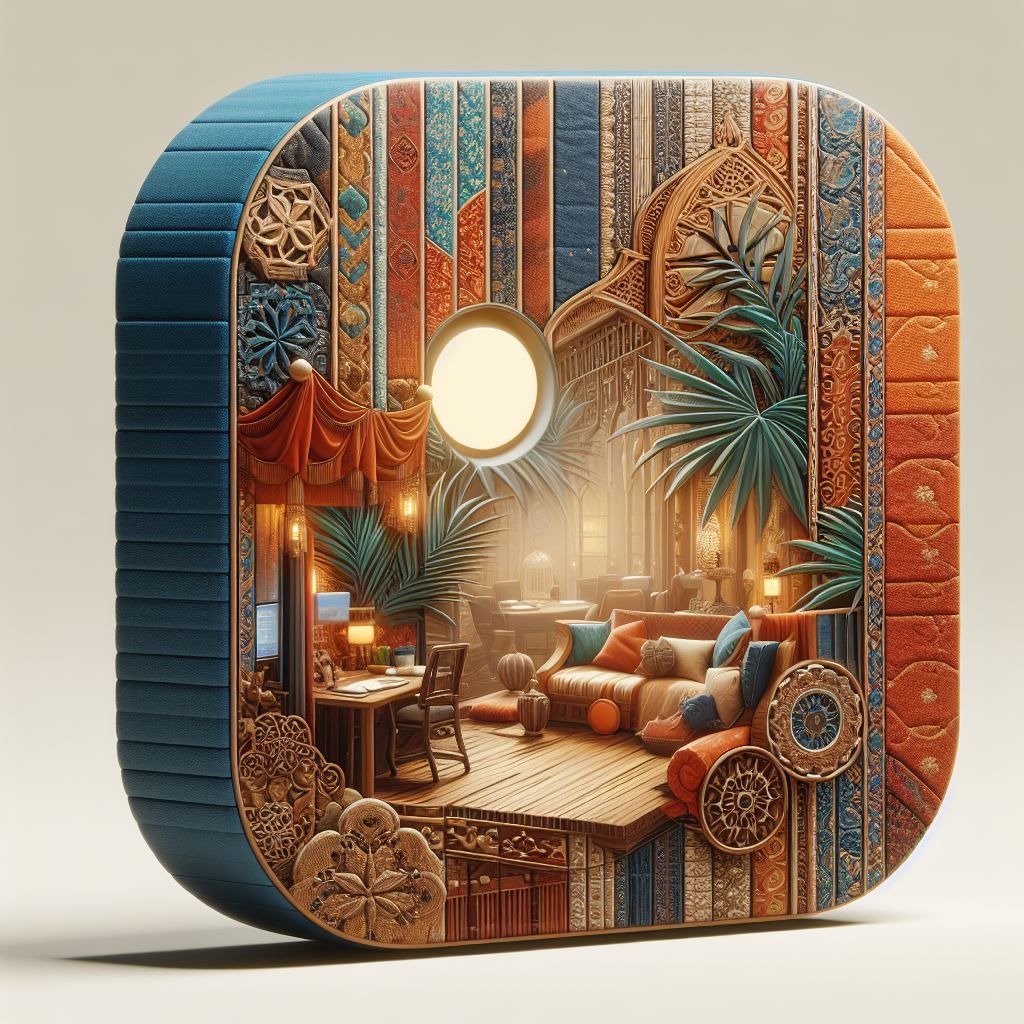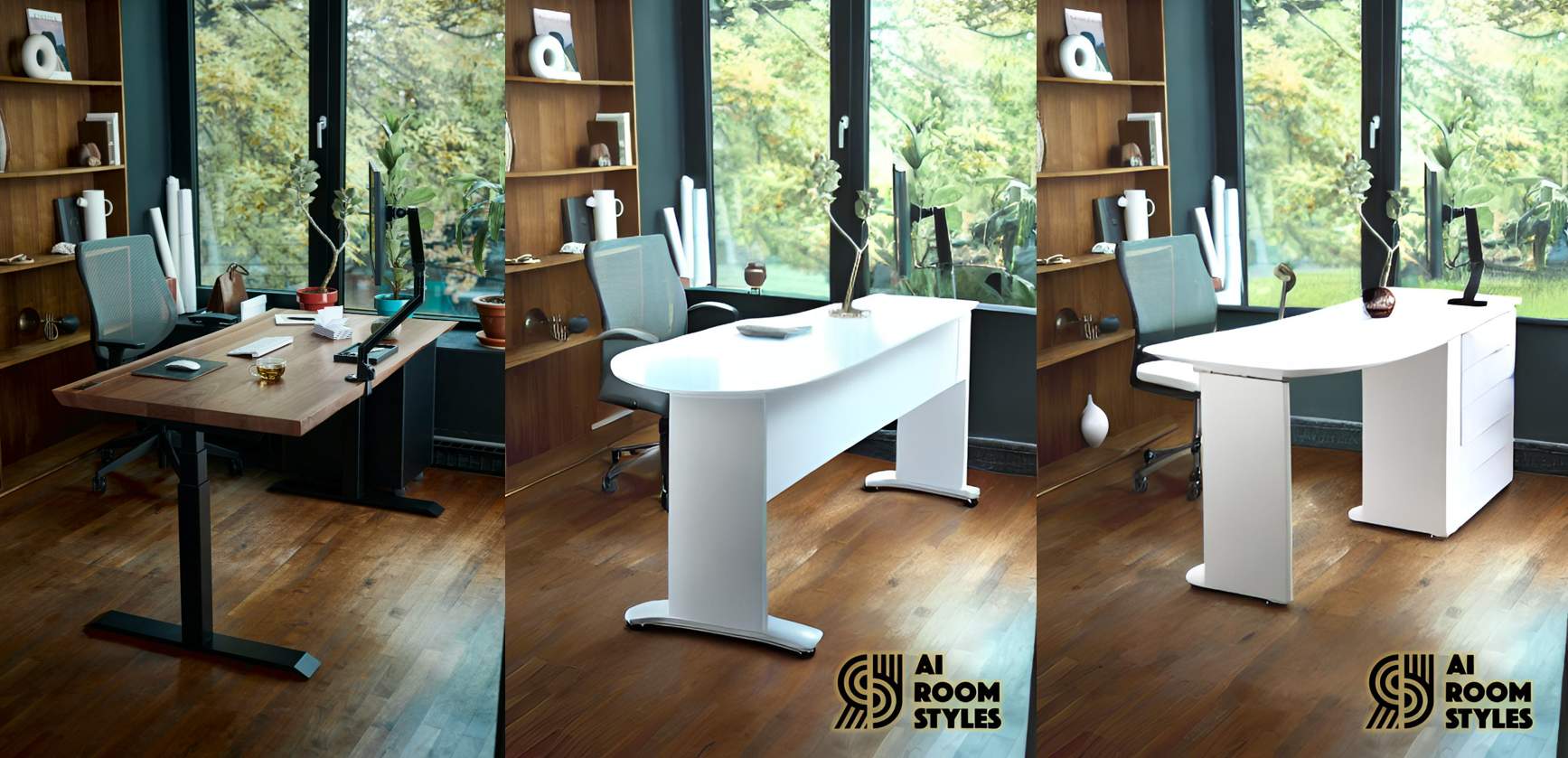Rustic and Modernized Indian Styles : AI for Home
2024/05/29
When selecting a space to infuse with inspiration and focus, the possibilities are vast. The unique blend of rustic and Indian styles, characterized by rich colored textures and a modern twist, creates a visually captivating and personalized harmony.

Generated Indian wooden art object
Style for Your Home and Home Office
When we envision rustic style, we often picture stone walls, a fireplace in the heart of the dining room, and a less ostentatious setting. However, rustic interiors also bring a sense of joy and ease, making life more enjoyable and effortless.
Inviting luxury makes choosing an elegant style close to nature possible in various ways. Among the possible choices, we would like to highlight the blend of this rusticity with the Indian style that brings vivacity and the modernity sought in decoration.
There are many Indian interior designers, and their styles are diverse. Many modern-traditional decorations today have this Indian influence without people knowing it.
In Indian interior design, an intricate tapestry of colors, patterns, and traditional elements has been capturing hearts globally. Exploring its essence and providing valuable insights for anyone interested in embracing this vibrant and diverse style. Whether you are an interior designer, a decor enthusiast, or someone curious about Indian aesthetics, this article will introduce you to it and the broad possibilities of this style to modernize your space.
The modern rustic style also allows you to combine Indian furniture, which are rather design objects. This provides ideal springiness. Also very interesting is the use of rich-colored wall patchwork.
You should not let the evolution and complexity of the Indian interior design style overwhelm you, as implementing the best styles in your home is even simpler than you might think:
Colors, Materials and Textures to consider.
Aside from color combinations, you would find yellows, pinks, greens, and blues. All of them collaborate to enhance home decor and furniture pieces. Blue and green are often used for pillows and other accent pieces. Furthermore, the interior design for the living room Indian style uses ochre and burnt oranges as wall and floor paintings. It is also very common to find earthy tones alongside saturated shades of fuchsia and purple.
A great modern approach, instead of creating a wholly opulent room, just add hints of color that pop out. Also, include some exotic artwork. Or simply adding straight-lined spaces with deliberate use of bright colors and patterns. Indian decor is full of striking lines and patterns that exude an exotic vibe to the room. Add a few pieces here and there to your Indian-style bedroom so it can have an extraordinary aura.
Another example of color integration is pairing a pink carpet with a lampshade with a base of the same color. You can add your throw pillows with pink and purple prints to avoid a monotonous room accented with delicate motifs. Also, an ethnic painting takes over the wall behind the dining table. Gone are the days when you have an overload of hues and tones. Additionally, you should avoid using contrasting colors. For example, pairing a yellow throw pillow with a pink sofa. Always tone down bright colors with neutrals such as white, beige, cream, and gray.
Mixing the old and the new, the magic takes place here. Combining traditional elements with modern design creates interiors that are uniquely Indian and says a lot about how the country’s style is changing. Putting together old and new things. A final example is a modern sofa with a traditional Rajasthani “jhoola” or a modern kitchen with brass tools.

Generated Office table, using the option "Replace one element" in a Indian white style
Wood:
Adopting these styles is a choice of elegance and a connection to nature. Embrace wood as one of the primary natural materials. This can involve choosing reclaimed wood flooring or other rustic-inspired design elements; if this is not within your means, opt for laminate with a reclaimed wood effect as an alternative to rustic decoration. Wood panels will also bring a touch of luxury; if you choose light wood, you will feel like you are in a cabin in the woods. If you have beams in your home, do not hesitate to incorporate them into your decoration and highlight them. Embrace organic and abstract imperfections for a unique design. Moreover, if you consider that, geometric designs are also prevalent in Indian decor. You can find chevrons, arabesques, diamond patterns, and overlapping basic shapes that seem to create hypnotic visions. These patterns can be found woven in rugs or printed on tiles. Adding Indian prints and patterns in different items, such as cushions and rugs, can enhance this look. Accessories and artifacts play a big role in achieving this look. For example, you can use a brass urli on a center table to give an instant Indian touch to modern interiors.

Generated Dining Room using the option "Smart Improvement" in a Rustic neutral style
Fabrics and Metals
Find fabrics in warm tones to make your decoration even more welcoming. For added luxury, choose a faux fur throw for the sofa and a patterned woven rug to complement the room and add a touch of color. Rugs are perfect if you have a wooden floor and need warmth during the cold seasons.
Nowadays, in more contemporary Indian homes, metallic elements such as mirrored mosaics and sequins add glamor to an already exquisite color palette.
As for metals, Iron, copper, and brass are all perfect natural metals for accessories. If you have a limited budget, imitations are still great and allow you to achieve your interior decoration goals without exceeding your budget. There are also fantastic rustic metal light fixtures. They will provide the finishing touch to any room. Rich metals are often paired with luxe colors and materials. The reason's straightforward: opulent interior design style uses ornate furniture, quality pieces, and special treatments.
This design style makes the most sense in a living room or entertainment area, where you receive guests and host gatherings. A simple living room can easily be upgraded with meticulously polished metals and luminous finishes. To create warmth and a welcoming aura, consider warmer golden tones over the blue undertones of aluminum and stainless steel.
For the kitchen, metals work best in cookware and utensils. Cookware is smaller in scale compared to actual furniture, and if you hate their look, you can always stow them away in your kitchen cabinets. That said, choose wisely, and you will have pots and pans performing double duty as decorative pieces when in use or simply hung above the kitchen island. That would provide a rustic tone. A popular choice for many homeowners and designers — and therefore easily accessible in the market — copper cookware and supplies conduct heat fantastically and can keep cold food cool. In addition, copper as a material is fairly low maintenance and can easily be revived after signs of wear and minimal damage. All that and copper is a stylish replacement for or addition to your typical non-stick and cast iron. In fact, copper's sheen, and warm hue mesh well with the common stainless steel kitchen appliances that most houses are furnished with. For its practicality, inherent design appeal, and more, copper just works for a space that sees a lot of work.
Opt for rose gold details and hardware for a more feminine, luxe take on this aesthetic. While considerably harder to maintain than copper, rose gold — a combination of gold, copper, and silver — has a unique air that cannot be replicated by other metal styles and finishes.
Exploring Circulation in Interior Design.
This demands careful planning and attention to several factors. Some steps to help in your search and achieve this might include:
- Consider Interior Design Principles
These principles include: flow, movement, and spatial organization within a space. Are the main concerns when speaking about circulation.
- Considerations about Floor Plans
Analyze different types of floor plans, including open layouts, closed layouts, and combinations thereof. Explore how circulation paths can be optimized within each type of floor plan.
- Incorporate Wayfinding Elements
Integrate wayfinding signage, landmarks, or visual cues to help users navigate complex or unfamiliar environments. Use consistent signage design and placement to create a cohesive wayfinding system.
- Enhance Knowledge on Traffic Patterns
Study how people move through and use spaces in buildings. Identify primary circulation paths and ensure they remain unobstructed, while also providing secondary routes for flexibility.
- Define Zones
Clearly define different functional zones within a space to guide movement and prevent confusion. Use visual cues such as rugs, lighting, or changes in flooring materials to delineate boundaries between areas.
- Optimize Layout
Arrange furniture and fixtures to promote smooth movement and minimize obstructions. For example, avoid placing large pieces of furniture in pathways and maintain clear sightlines to prevent congestion.
- Minimize Wasted Areas
Avoid overcrowding by carefully selecting furniture and accessories that serve multiple functions or can be easily reconfigured.
- Search Case Studies
Watch interior design projects available online that prioritize circulation. Analyze how designers have addressed circulation challenges and optimized flow in various contexts. As in this example.
- Understand Human Behavior
Research human behavior in built environments. Consider factors such as comfort, safety, accessibility, and user preferences when designing circulation paths.
- Consider Ergonomics
Explore ergonomic principles related to interior design. Understand how factors such as furniture placement, aisle widths, and doorway clearances impact circulation and usability.
- Utilize Design Software and Tools
Experiment with design software and tools that allow you to visualize and simulate circulation patterns within a space. Use tools like CAD (Computer-Aided Design) software to create and analyze floor plans.
- Study Building Codes and Regulations
Familiarize yourself with building codes and regulations related to circulation in interior spaces. Understand requirements for minimum clearances, emergency egress routes, and accessibility standards.
- Consult Expert Sources
Seek guidance from interior designers, architects, and experts in human-centered design. Attend workshops, seminars, and conferences to learn from industry professionals and gain insights into best practices for circulation design.
Combining research, analysis, and practical application allows you to search for information and develop a comprehensive understanding of how to thoughtfully consider circulation in interior design.
The perfect alchemy of rustic and modernized Indian styles
Interaction between furniture and effective use of space is essential.
By cleverly blending traditional elements with modern touches and choosing the right materials, colors, furniture, and accessories, you can transform your interior into a place that reflects your identity while staying current.
